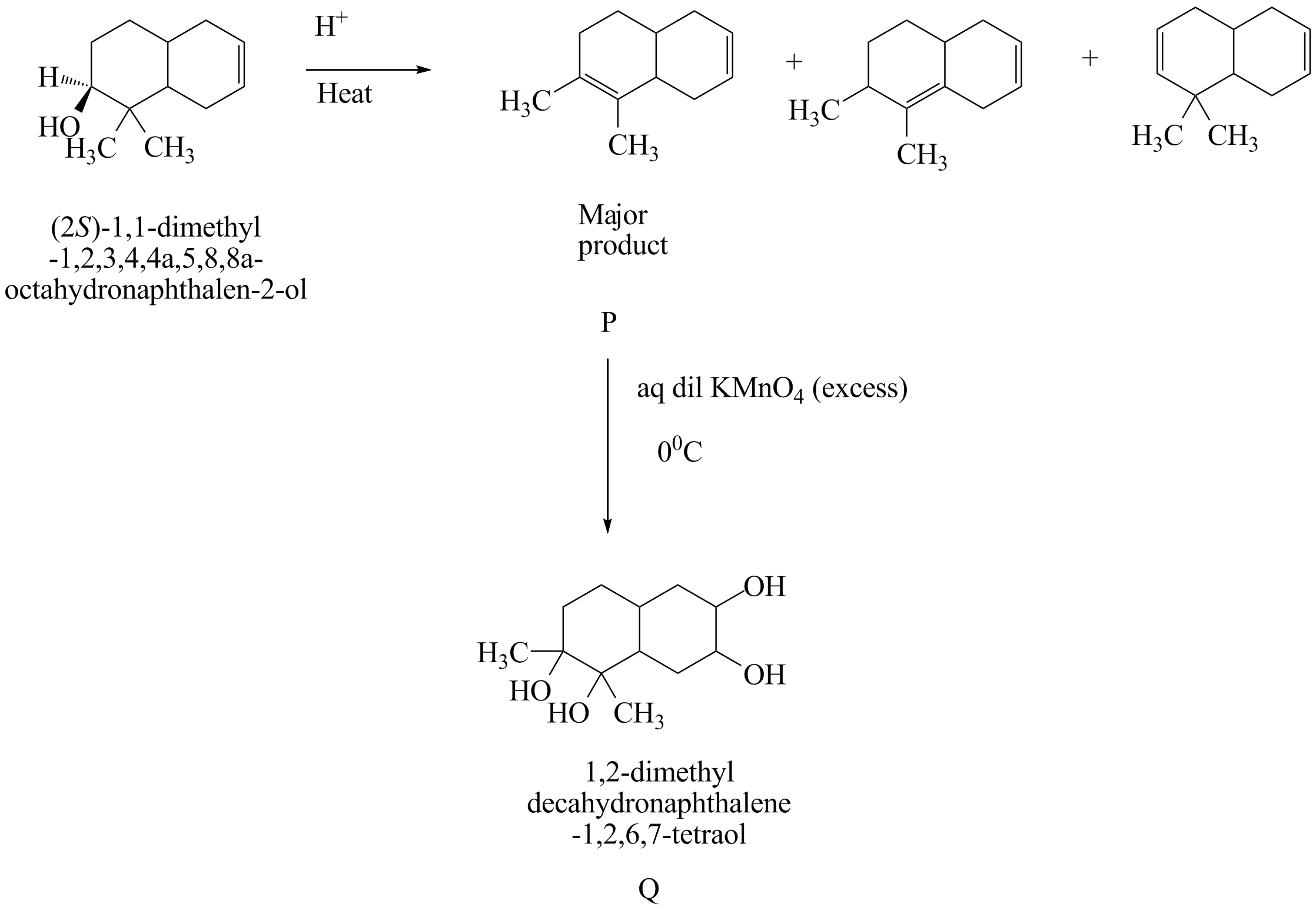
The number of hydroxyl group(s) in Q is ?


Answer
450.9k+ views
Hint :This step is the multiple reaction in which the intermediate product is formed. The final product of the reaction is phyrophosperic acid. Phyrophosperic acid molecular structure is
Complete Step By Step Answer:
The first step is the acid catalyzed dehydration reaction in which the alcoholic group is converted to an alkene group. A dehydration reaction is a reaction in which an organic compound undergoes loss of water molecules to form an alkene group with a carbon-carbon double bond. The primary carbocation form is the carbon group with a positive ion charge. The secondary carbocation rearranges itself into tertiary carbocation to form a more stable alkene group.
In the next step dihydroxylation reaction takes place in which an alkene group is converted into a vicinal diol in presence of excess potassium permanganate
Pyrophosphoric acid is also known as diphosphoric acid. It is a colorless, odorless, hygroscopic and is soluble compound in water, diethyl ether, and ethyl alcohol.

As stated in the reaction that
Therefore, the number of hydroxyl group(s) in Q is
Note :
Anions, salts, and esters of pyrophosphoric acid are known as pyrophosphates. It is an acyclic phosphorus acid anhydride obtained by condensation of two molecules of phosphoric acid.
Complete Step By Step Answer:
The first step is the acid catalyzed dehydration reaction in which the alcoholic group is converted to an alkene group. A dehydration reaction is a reaction in which an organic compound undergoes loss of water molecules to form an alkene group with a carbon-carbon double bond. The primary carbocation form is the carbon group with a positive ion charge. The secondary carbocation rearranges itself into tertiary carbocation to form a more stable alkene group.
In the next step dihydroxylation reaction takes place in which an alkene group is converted into a vicinal diol in presence of excess potassium permanganate
Pyrophosphoric acid is also known as diphosphoric acid. It is a colorless, odorless, hygroscopic and is soluble compound in water, diethyl ether, and ethyl alcohol.

As stated in the reaction that
Therefore, the number of hydroxyl group(s) in Q is
Note :
Anions, salts, and esters of pyrophosphoric acid are known as pyrophosphates. It is an acyclic phosphorus acid anhydride obtained by condensation of two molecules of phosphoric acid.
Latest Vedantu courses for you
Grade 11 Science PCM | CBSE | SCHOOL | English
CBSE (2025-26)
School Full course for CBSE students
₹41,848 per year
Recently Updated Pages
Master Class 4 Maths: Engaging Questions & Answers for Success

Master Class 4 English: Engaging Questions & Answers for Success

Master Class 4 Science: Engaging Questions & Answers for Success

Class 4 Question and Answer - Your Ultimate Solutions Guide

Master Class 11 Economics: Engaging Questions & Answers for Success

Master Class 11 Business Studies: Engaging Questions & Answers for Success

Trending doubts
Give 10 examples of unisexual and bisexual flowers

Draw a labelled sketch of the human eye class 12 physics CBSE

Differentiate between homogeneous and heterogeneous class 12 chemistry CBSE

a Tabulate the differences in the characteristics of class 12 chemistry CBSE

Why is the cell called the structural and functional class 12 biology CBSE

Differentiate between insitu conservation and exsitu class 12 biology CBSE




